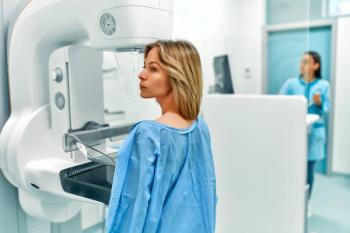
How Extended Reality Is Changing Cardiology
Virtual reality does more than improve medical education.
Image has been cropped and resized. Courtesy of
Doctors can now manipulate holographic hearts and see our anatomy in 3D, and it’s only the beginning of a wave of similar high-tech tools to come.
As the technology behind virtual and augmented reality progresses, in both hardware and software, the possibilities for application in cardiology continue to expand. These technologies are already used in medical education and training, and they will soon be ready for live use during medical procedures, according to a new report published in
>>
The paper explores the existing tools and applications of extended reality technology in cardiology, outlining some of the challenges to its adoption and more advanced applications.
"We've come to this point in the evolution of these technologies, where they now can cross over from being a tool that we just use to see things, to a tool we can use to interact or relate with things,” says Jennifer N.A. Silva, MD, a pediatric cardiologist and the paper’s lead author.
Silva is also a co-founder of the biotech startup SentiAR, which is building a tool that will allow cardiologists to interact with holographic hearts in real-time during electrophysiology procedures.
Extended reality is a spectrum of technologies that enhance or replace the real world, bookended by virtual and augmented reality. On the one end, virtual reality replaces a user’s surroundings so that they’re fully immersed in an alternate universe; augmented reality overlays the physical world with virtual annotations. In between are merged and mixed reality, which combine elements of both, providing an immersive virtual experience anchored to physical space.
This interim space could be highly useful for medical applications, since it allows the doctor to interact with virtual displays during a procedure while standing beside the patient.
In cardiology, extended reality is already being applied as a supplementary tool in education, pre-procedural preparation, and procedures. Existing tools make use of both virtual and mixed reality to simulate a procedure or allow users to interact with 3D displays. In education, examples include the Stanford Virtual Heart, a fully immersive VR experience for students to explore up to 20 congenital heart diseases, and HoloAnatomy, a program which uses Microsoft’s HoloLens headset to change anatomic education.
In addition, the FDA has approved the EchoPixel’s 3D display, allows doctors to see inside the human body in three dimensions when wearing 3D glasses. When integrated with a medical imaging workstation, it can be used for diagnostic purposes.
A company called Realview, which hopes to extend the 3D display into live and interactive holography, partnered with the pediatric cardiology department at Schneider’s Children Medical Center to pilot its technology. The team successfully generated real-time holograms for eight patients with various heart issues. Doctors manipulated the holographic images by cropping, zooming, or turning them, along with other simple interactions.
Silva says we’re still in the very early days for extended reality, particularly when it comes to hardware. “The current versions of hardware are like the original cell phones, those big chunky bricks,” she said. But she expects that to change dramatically over the next several years. “It’s important for us to have the vision, to see where we want it to be, so we can work with the hardware makers, so they can understand what our needs in medicine are, rather than just developing this for gamers.”
Get the best insights in healthcare analytics
Related


















































